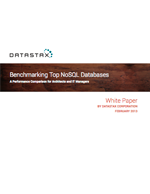Generating PDF documents in the browser
What you will learn
- How to generate PDF documents in the browser with JavaScript
- How to generate them out of normal HTML
- How to open those PDFs in new windows
- How to render them inline inside the DOM
Introduction
Every once in a while as web developers we face the challenge of providing PDF documents for the data we have persisted in the database.
The usual approach is to:
- generate the document with a library / DSL in the language of the backend
- or—generate normal html view and use a utility like wkhtmltopdf
That works nice, but what if you’re developing an SPA app which only consumes JSON data from its backend? Imagine a scenario when the backend isn’t capable of producing responses other than JSON data. What could you do there?
The solution
Thanks to some very bright folks behind the jsPDF library we have both above mentioned options right inside the browser.
I strongly encourage you to visit their website. There is a nice live coding editor set up which reflects in real time the PDF your code is producing.
Using the DSL
The whole process looks like this:
# 1. create jsPDF object:
doc = new jsPDF()
# 2. put something interesting in there:
doc.setFontSize(22)
doc.text(20, 20 …javascript pdf
NoSQL benchmark of Cassandra, HBase, MongoDB
We’re excited to have recently worked on an interesting benchmarking project for DataStax, the key company supporting the Cassandra “NoSQL” database for large horizontally-scalable data stores. This was done over the course of about 2 months.
This benchmark compares the performance of MongoDB, HBase, and Cassandra on the widely-used Amazon Web Services (AWS) EC2 cloud instances with local storage in RAID, in configurations ranging from 1-32 database nodes. The software stack included 64-bit Ubuntu 12.04 LTS AMIs, Oracle Java 1.6, and YCSB (Yahoo! Cloud Serving Benchmark) for its lowest-common-denominator NoSQL database performance testing features. Seven different test workloads were used to get a good mix of read, write, modify, and combined scenarios.
Because cloud computing resources are subject to “noisy neighbor” situations of degraded CPU or I/O performance, the tests were run 3 times each on 3 different days, with different EC2 instances to minimize any AWS-related variance.
The project involved some interesting automation challenges for repeatedly spinning up the correct numbers and types of nodes, configuring the node software, running tests, and …
database mongodb nosql performance cassandra
Streaming Live with Red5 Media Server: Two-Way
I already wrote about the basics of publishing and broadcasting with Red5 Media Server. Let’s fast forward to the advanced topics and create a video conference now!
Getting Ready
First, a word about the technology stack: a little bit of Java6/Java EE will be used for the server-side work (Red5 is written in Java), ActionScript2/Adobe Flash CS6 will be the primary tool for the client side development, and OS X Mountain Lion is my operating system.
Red5 Server comes with the set of sample applications that provide the source code for about everything you may want to achieve. The primary challenge is to unleash the power of it, since the samples fall extremely short of documentation! The “fitcDemo” application will serve as a base for all our customization.
Originally I made all the development in Red5 RC 1.0 version where fitcDemo was present. Unfortunately, when I downloaded the latest Red5 1.0.1 release yesterday it was simply not there! The source code was still in the repo, just outdated and not working. Well, I did all the work for Red5 team, so you can just download fitcDemo.war from my repo and drop it into the “webapps” directory of Red5 1.0.1 installation—and you are good! …
java video audio
Data binding in web applications
Ever since JavaScript was introduced the world of web programming has constantly been visited by creative minds, ready to solve burning problems web developers were experiencing.
Navigating through some of the oldest web-dev articles, we still can feel the pain of manipulating the DOM, the-vanilla-way and creating ever so clever hacks to make the code work on all of the web browsers.
Then, the JS-frameworks epidemy started to disseminate. As web developers—we started to have some powerful tools. The productivity of average nerdy Joe raised immediately as he started using Prototype.js, Mootools or jQuery.
Evolution of UI programming for browsers
And so was the start of our global evolution, towards making the Web—our main means of interacting with users. Few with big enough imagination were already seeing HTML, CSS & JS as the future standard of creating user interfaces for data-rich applications. Of course, there were toolkits like ExtJS which aimed at nothing but this—but who would have known back then, that we will be able to build apps for smartphones the way we are building ones for the web?
I have my little observation in life — all hot stuff in the world of technology, …
javascript jquery open-source user-interface
Installing Python in local directory
On one of our client’s Ubuntu 10.04 machines, I needed to upgrade Python from 2.6 to 2.7. Unfortunately, after installing Python 2.7 from apt the virtualenv, version 1.4.5, did not work correctly. This bug was fixed in a newer virtualenv version, however there were no Ubuntu packages available.
I thought about trying something else: why not install all the software locally in my home directory on the server? When virtualenv is used to create a new environment, it copies the Python executable in to the virtualenv directory.
First I install pythonbrew, which is great software for installing many different Python versions in a local directory.
$ curl -kL http://xrl.us/pythonbrewinstall | bashThen I activate pythonbrew with:
$ source "$HOME/.pythonbrew/etc/bashrc"And install the Python version I want:
$ pythonbrew install 2.7.3The installation took a couple of minutes. The script downloaded the tarball with the Python source code for the required version, compiled it and installed. It was writing all the information into a log file, which I was looking at by running the command below in another console:
$ tail -f $HOME/.pythonbrew/log/build.logYou can also add the …
python
Crossed siting; or How to Debug iOS Flash issues with Chrome
This situation had all the elements of a programming war story: unfamiliar code, an absent author, a failure that only happens in production, and a platform inaccessible to the person in charge of fixing this: namely, me.
Some time ago, an engineer wrote some Javascript code to replace a Flash element on a page with an HTML5 snippet, for browsers that don’t support Flash (looking at you, iOS). For various reasons, said code didn’t make it to production. Fast forward many months, and that engineer has left for another position, so I’m asked to test it, and get it into production.
Of course, it works fine. My only test platform is an iPod, but it looks great here. Roll it out, and ker-thunk: it doesn’t work. Of course, debugging Javascript on an iPod is less than optimal, so I enlisted others with Apple devices and found that it mostly failed, but maybe worked a few times, depending on [SOMETHING].
To make matters a bit worse, the Apache configurations for the test and production environments differed, just enough to raise my suspicions and convince me that was worth investigating. Once I went down that path, it was tough to jar myself loose from that suspicion.
I tried disabling …
chrome html interchange javascript
To ask or not to ask? Debug first.
Jumping head first into a project, the ramp up will likely lead to questions galore. In the eagerness of getting things done, it seems like the best thing to do when stuck is to just ask the seasoned developers to tell you how to move forward. After all, they did build the application. However, when to reach out for help can be dependent on the deadline and priority of the task at hand as well as your subjective definition of “stuck.” Knowing when it’s too early, just right, or too late to get help can be a tricky thing. Here are some things to consider when reaching out for help early:
Pros.
1. Time/money is of the essence and getting a quick answer is best.
2. Time saved debugging a particular issue that does not further your understanding of the application can be applied elsewhere.
Cons.
1. You risk a learning opportunity by throwing in the towel too early.
2. You risk looking lazy or unprepared if the person whom you are reaching out to believes you could have done more.
3. Developers are busy, too.
All cases being different, there is no right time to reach out for help but steps can be taken to ensure that you have your part. First, get better at reading source code. The …
programming
Configuring RailsAdmin 0.0.5 with CKeditor 3.7.2
If you like adventures, read on! Because recently I went trough a really tough one with RailsAdmin 0.0.5 and Ckeditor 3.7.2 in production mode. I only needed to enable the WYSIWYG editor for one of the fields in admin, yet it turned out to be a bit more than just that.
After I installed ckeditor gem, created the custom config file as described in Ckeditor gem readme and added ckeditor support to the field as suggested by RailsAdmin configuration tutorial, both frontend and backend in production mode were broken in pieces with JavaScript errors. So what did I do wrong?
The problem with frontend
After careful investigation it turned out that ckeditor files were not loading on the frontend, but my custom ckeditor configuration file was. And because CKEDITOR was not defined anywhere, the following code in my config.js failed:
CKEDITOR.editorConfig = function( config )
{
config.toolbar = 'Basic';
config.toolbar_Basic =
[
['Source', 'Bold', 'Italic', 'NumberedList', 'BulletedList', 'Link', 'Unlink']
];
config.enterMode = CKEDITOR.ENTER_BR;
config.shiftEnterMode = CKEDITOR.ENTER_BR; …javascript rails


 Benchmark White Paper
Benchmark White Paper


